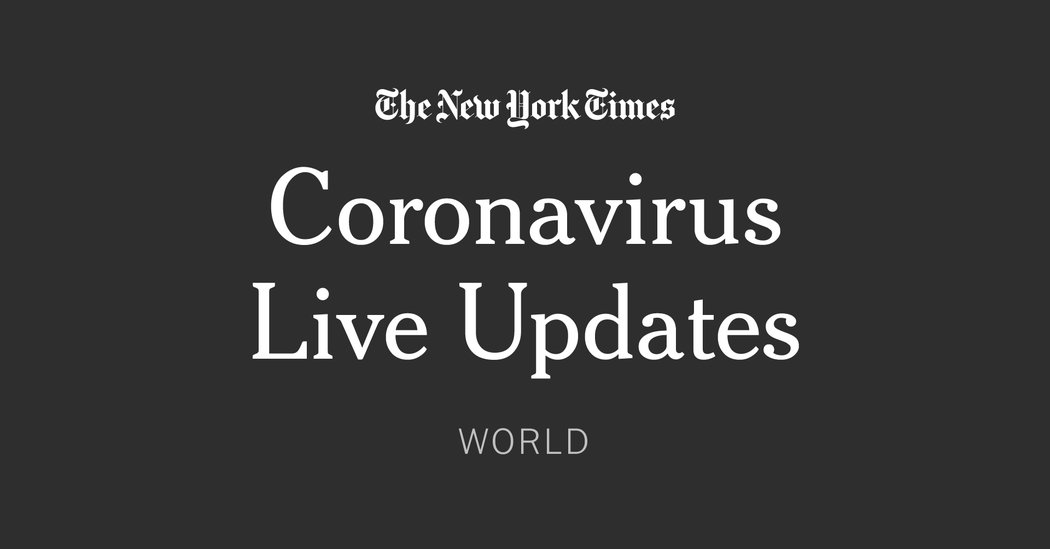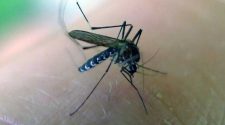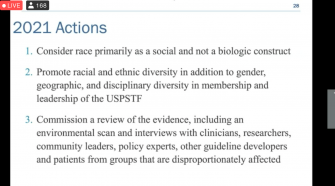In the worldwide race for a vaccine, here’s where they stand.
Researchers around the world are developing more than 125 vaccines against the coronavirus. Vaccines typically require years of research and testing before reaching the clinic, but scientists are hoping to produce a safe and effective vaccine by next year.
The New York Times is following the status of those that have reached trials in humans.
There are three phases before a vaccine is approved for use, but some projects have combined early phase trials to speed up the process. Some coronavirus vaccines are now in Phase I/II trials, for example, in which they are tested for the first time on hundreds of people.
Additionally, the U.S. government’s Operation Warp Speed program has selected five vaccine projects to receive billions of dollars in federal funding and support before there’s proof that the vaccines work.
Work began in January with the deciphering of the SARS-CoV-2 genome. The first vaccine safety trials in humans started in March, but the road ahead remains uncertain. Some trials will fail, and others may end without a clear result. But a few may succeed in stimulating the immune system to produce effective antibodies against the virus.
The world economy is facing the most severe recession in a century and could experience a halting recovery with a potential second wave of the virus and as countries embrace protectionist policies, the Organization for Economic Cooperation and Development warned in a new report.
A grim economic outlook released by the O.E.C.D. on Wednesday depicted a world economy that is walking on a “tightrope” as countries began to reopen after three months of lockdowns. Considerable uncertainty remains, however, as the prospects and timing of a vaccine remain unknown. Health experts fear that the spread of the virus could accelerate again later this year.
“Extraordinary policies will be needed to walk the tightrope towards recovery,” said Laurence Boone, the O.E.C.D.’s chief economist.
The O.E.C.D., which comprises 37 of the world’s leading economies, predicts that the global economy will contract by 6 percent this year if a second wave of the virus is avoided. If a second wave does occur, world economic output will fall 7.6 percent, before rebounding by 2.8 percent in 2021. The two scenarios are viewed as equally plausible.
The report is slightly more ominous than other recent forecasts from the World Bank and the International Monetary Fund.
The Fed will release economic projections and is expected to leave interest rates near zero.
The Federal Reserve is widely expected to leave interest rates near zero on Wednesday while pledging to continue buying bonds, but economists are watching for any hint about how the central bank might adjust policy in the longer run.
Officials are set to release their first set of economic projections of 2020, having skipped the quarterly summary in March as the pandemic gripped the United States, sowing uncertainty. The forecasts will show how they expect unemployment, inflation and growth to shape up in the years ahead.
Many Fed watchers expect officials to use the interest rate projections and their post-meeting statement, released at 2 p.m. Eastern time, to clearly signal that borrowing costs will remain at rock-bottom for some time. Policymakers could also use the statement to make clear they will try to goose the economy through their bond-buying program. The Fed has been snapping up government-backed bonds to keep markets functioning normally, but conditions have calmed, so they could make that program explicitly focused on stimulating the economy.
But the more significant moment may come when Jerome H. Powell, the Fed chair, holds an online news conference at 2:30 p.m. While he has sounded wary about the path ahead, analysts are curious to hear his take on the economy as states gradually open and the job market stages an early rebound.
South Korea on Wednesday began requiring gyms, nightclubs, karaoke bars and concert halls to register visitors through smartphone QR codes, in the country’s latest effort to fight a new wave of coronavirus infections linked to entertainment venues.
Until now, such facilities had mostly asked their customers to write down their identities and contact information in rosters before entering. But when the authorities tried to track down customers after the new infections began cropping up last month, they found that much of the information was fake.
Under the new system, nightclubs and other facilities must install QR scanners, and customers must download a QR code that contains their basic personal information. Any QR codes that the government collects are to be automatically destroyed after four weeks.
South Korea’s project is just the latest effort worldwide to harness common consumer technology to track new cases. But privacy concerns have made the approach slower to catch on in the United States and Britain. And in China, the government’s virus-tracking software has prompted fears that it will randomly collect citizens’ information in the name of disease prevention.
There has not yet been a significant public debate over South Korea’s new tracking system, although that may come as the government rolls it out.
Since last month, South Korea has eased its social-distancing restrictions, saying it was confident in its virus-containment strategy. But it has also urged people to stick to preventive measures and said its goal is to keep the daily caseload below 50 until a vaccine is available.
South Korea’s daily caseload has fluctuated between 38 and 57 over the past week, and the country reported 50 new cases on Wednesday.
Here are other developments from around the world:
-
Greece, a country that largely managed to contain the virus, is seeing a spike in cases, just days before it opens its borders to tourists. On Monday, the government announced that in the past four days 97 people had tested positive for the coronavirus since Thursday; 30 of them had traveled from abroad. The government said on Tuesday that it would increase testing and localized restrictions, according to local reports.
-
Denis Mukwege, a gynecologist and 2018 Nobel Peace Prize laureate, resigned Wednesday from the committee to respond to the pandemic in the province of South Kivu in the Democratic Republic of Congo, a position he was appointed to two months ago. Dr. Mukwege said he was resigning because of difficulties in testing procedures and disorganization in efforts to fight the virus. Congo has reported 4,259 cases and 90 deaths, according to the Africa Centers for Disease Control and Prevention.
-
Horst Seehofer, Germany’s interior minister, said Wednesday that most travel restrictions on incoming European Union and Swiss citizens would be lifted as of June 16. Controls at German land borders would also be eased. E.U. or Swiss citizens arriving from European coronavirus hot spots — regions where at least 50 coronavirus infections per 100,000 people were registered in the previous seven days — would still have to quarantine when traveling to most German states. Controls on flights coming from Spain will be lifted on June 21.
Mnuchin plans to paint an optimistic picture of the economy’s trajectory.
Treasury Secretary Steven Mnuchin will defend the Trump administration’s efforts to prop up the economy on Wednesday, arguing that the extraordinary array of stimulus measures will set the stage for a dramatic recovery in the second half of the year.
Mr. Mnuchin, who will testify before the Senate’s small business committee, is expected to offer an optimistic outlook about the trajectory of the economy. He will highlight the recent employment figures that were better than expected and point to data that show Americans have been building their savings in recent months and will be ready to spend as the economy reopens.
“We remain confident that the overall economy will continue to improve dramatically in the third and fourth quarter,” Mr. Mnuchin will say, according to his prepared testimony.
The Treasury secretary will appear with Jovita Carranza, the administrator of the Small Business Administration, to update lawmakers on the status of the Paycheck Protection Program, a lending initiative that was created by Congress in March as a lifeline for small businesses, allowing them to pay workers and overhead during the shutdown.
The program, initially plagued by glitches and other problems, has approved about $510 billion of loans, and an additional $150 billion is available.
Lawmakers on the committee are expected to question Mr. Mnuchin and Ms. Carranza about what a next phase of the program might look like and what additional changes might be beneficial to small businesses.
They are also likely to face questions about measures to ensure that businesses owned minorities and women have sufficient access to loans. A report by the S.B.A.’s inspector general found last month that the administration failed to prioritize underserved groups in accordance with the legislation.
At a Brooklyn hospital, one last, loud cheer.
Early this spring at Brooklyn Hospital Center, when the I.C.U. was overflowing, Covid-19 patients were dying left and right and a third of the doctors and nurses were out sick, a cheering section would materialize outside every evening as 7 p.m. approached, like fans at the stage door hoping to glimpse their idols.
And every evening, as the people on the sidewalk hooted, blasted songs and held up signs that said things like “Boundless Gratitude,” exhausted hospital workers would come out at the end of their shifts, soak up the love, sway to the music and wave like beauty queens.
Now, with the outbreak in New York City vastly diminished and attendance at the nightly cheer dropping, the organizers threw a farewell party.
On Monday evening, as the nurses and doctors and orderlies filed out, a bagpiper played “Amazing Grace.” A medic gave a bouquet and a hug to one of the regular cheerleaders. The D.J. played “Last Dance,” and everyone did.
“It’s been so uplifting to have people give their time to come here and support us,” said Alyeshan Quinones, an E.R. nurse.
A study indicates Britain, where more than 40,000 have died from the virus, may have missed a chance to slow its assault.
Only “a tiny fraction” of the first virus cases in Britain came directly from China while a vast majority came via Europe, a study of the genetic lineages of virus samples has found.
The results suggest that Britain could have slowed the arrival of the virus by moving faster to advise against all nonessential overseas travel instead of only counseling against travel to mainland China, where the virus originated.
The study, which was posted on a virology website on Tuesday and has not been peer reviewed, is the latest indication that travel bans on China appear to have had little effect on mitigating the spread of the virus.
The authors of the study drew on research by Covid-19 Genomics U.K., a consortium of public and academic laboratories that is funded in part by the British government. The consortium has so far generated more than 20,000 genome sequences and identified 1,356 genetic lineages of the virus — that is, chains of infection stretching from patient to patient.
The study concluded that about 34 percent of the lineages detected had arrived from Spain, 29 percent from France, 14 percent from Italy and 23 percent from other countries.
The authors also estimate that 80 percent of “importation events” — new arrivals of the virus — took place during the one-month period between Feb. 28 and March 29.
Britain advised against nonessential travel to China on Jan. 28. But the government did not advise until March 17 against nonessential travel overseas
The authors note that as a result the volume of incoming arrivals remained high as the global rate of infection was soaring during the first half of that month.
“Notably there was a period in mid-March when inbound travel to the U.K. was still substantial and coincided with high numbers of active cases elsewhere,” the authors of the study wrote.
How the virus compares with 100 years of deadly events.
Only the worst disasters completely upend normal patterns of death, overshadowing, if only briefly, everyday causes like cancer, heart disease and car accidents.
Demographers who study patterns of death call these deviations “mortality shocks,” sudden spikes in the number of fatalities not seen in the weeks before and not likely to be seen after the event is over. They’re often attributed to natural disasters, a severe flu season, famines or wars.
Among the findings: Denver had a monthly mortality increase that exceeded New York City’s in the period around Sept. 11, 2001. The rise in deaths in Paris was greater than the increase related to Hurricane Katrina in August 2005. In Madrid, where more than 14,000 people died from mid-March to mid-April (compared with the typical 3,000 at that time of year), the increase was greater than the one in New York City during the flu pandemic in 1918.
These figures reflect only deaths through May. In many cities in Latin America, Asia, Africa and the Middle East, the outbreak is still getting worse.
“Oh my goodness,” Dr. Anthony S. Fauci, the top infectious disease expert in the United States, said Tuesday. “Where is it going to end? We’re still at the beginning of it.”
No more communal snack jars. No more hugging. Probably no more giant open spaces.
Tech giants helped reshape the American office from packed rows of partitioned cubicles into airy shared spaces. The homey, amenity-filled new settings encouraged collaboration and community — while reducing employees’ eagerness to leave for home.
But the pandemic has made unbounded offices a liability.
Now some of the tech companies responsible for popularizing the open office believe they have an obligation — and a big business opportunity — to pioneer a new normal.
Facebook, for one, is betting heavily on remote work. Last month, on the same day employees were told that working from home could become permanent for many of them, the company introduced new remote-working tools for its enterprise clients. They included Workplace Rooms, a videoconferencing service for team meetings.
Salesforce, whose cloud software for businesses already enables remote work, is staking out different territory as it tries to figure out how to reopen its more than 160 offices worldwide.
“It’s going to be different,” Salesforce’s chief executive, Marc Benioff, said. “It’ll be more sterile. It’ll be more hospital-like.”
Reporting was contributed by Choe Sang-Hun, Jonathan Corum, Abdi Latif Dahir, Sheri Fink, Josh Katz, David D. Kirkpatrick, Iliana Magra, Allison McCann, Richard C. Paddock, Alan Rappeport, Christopher F. Schuetze, Dera Menra Sijibat, Natasha Singer, Jenna Smialek, Kaly Soto, Jin Wu and Carl Zimmer.

















